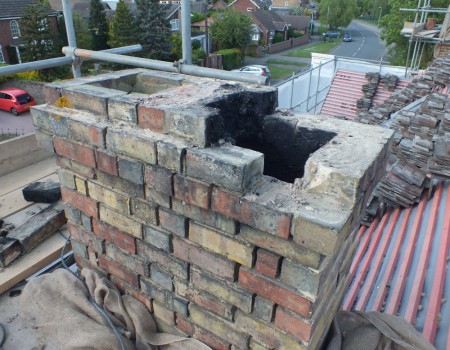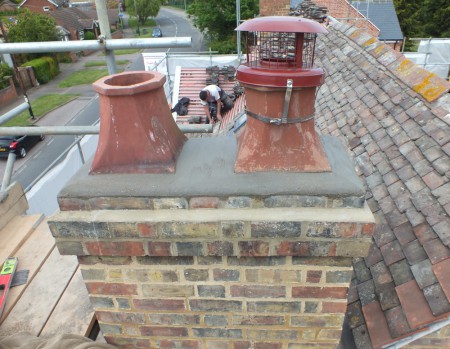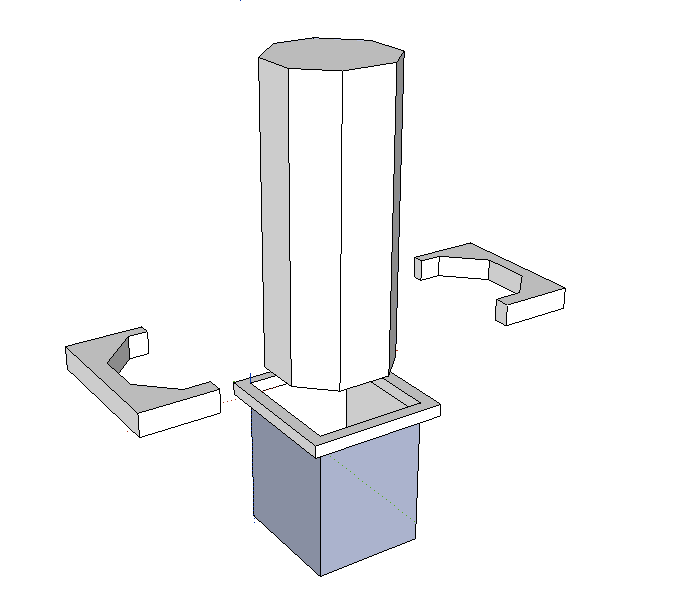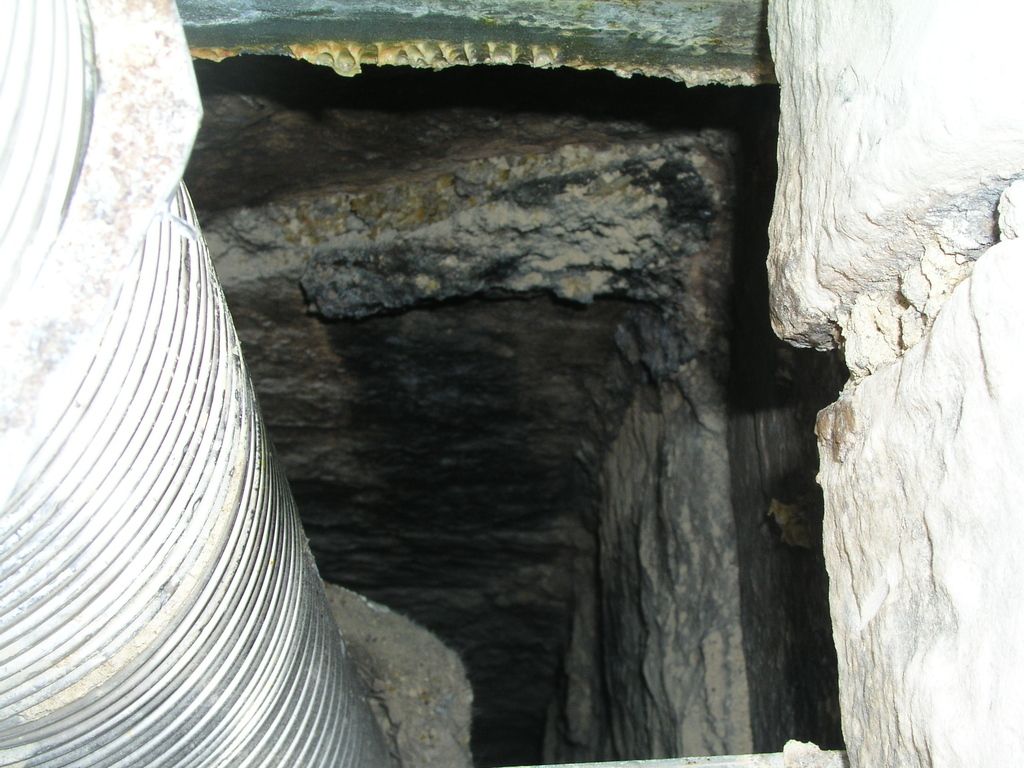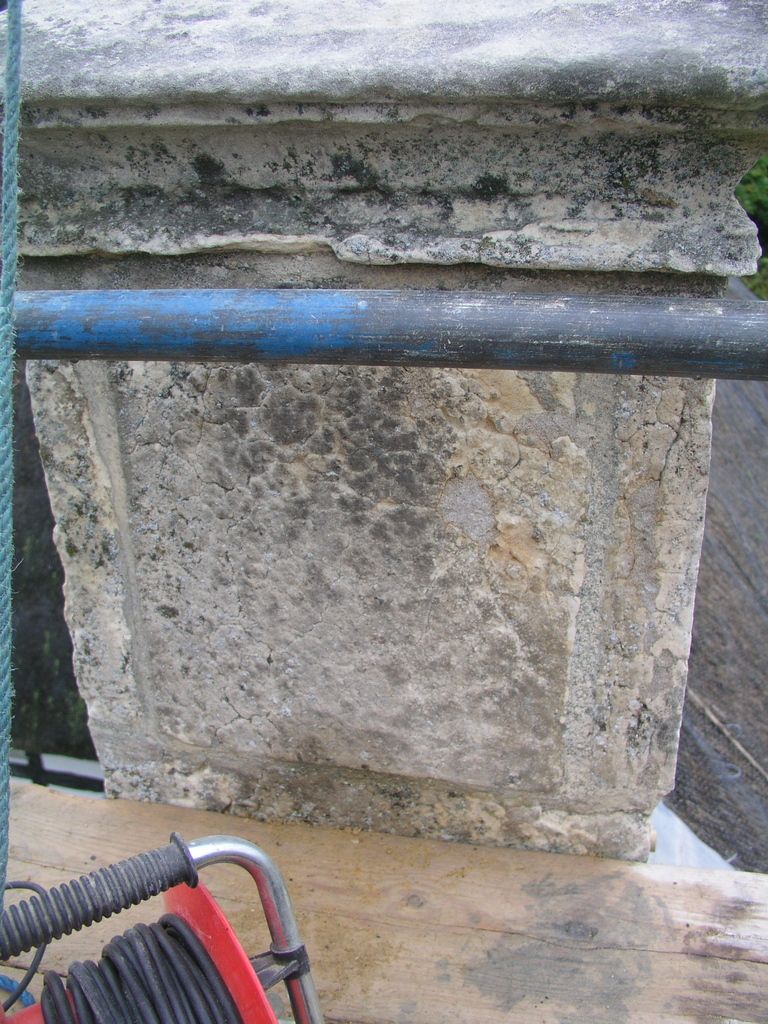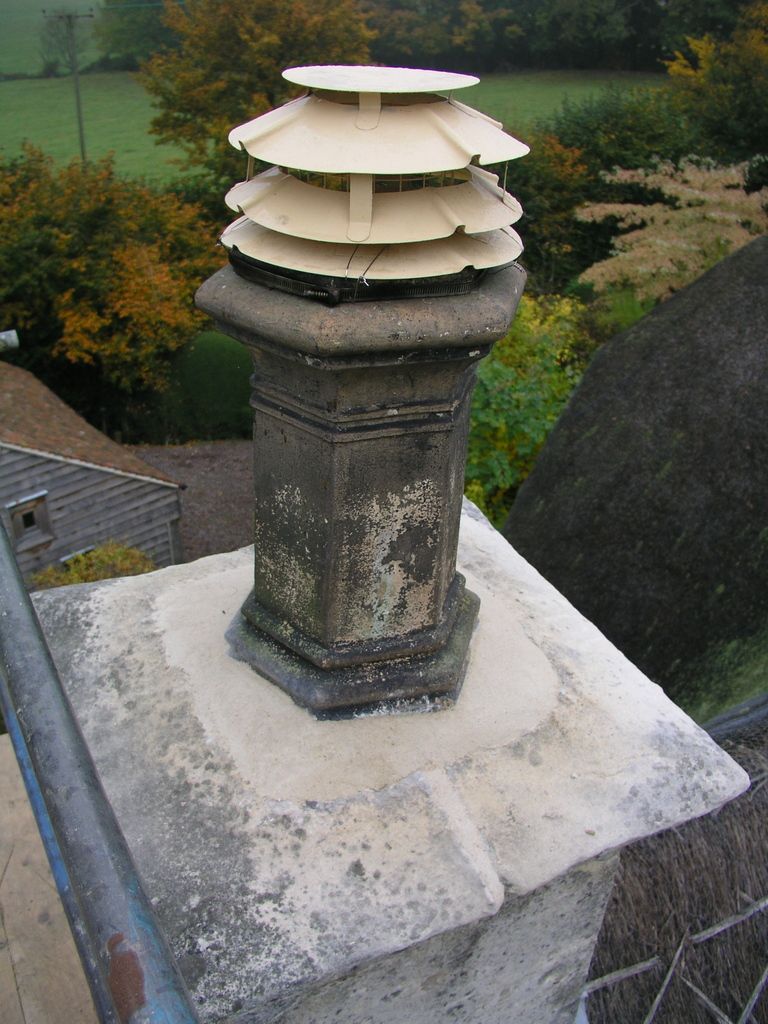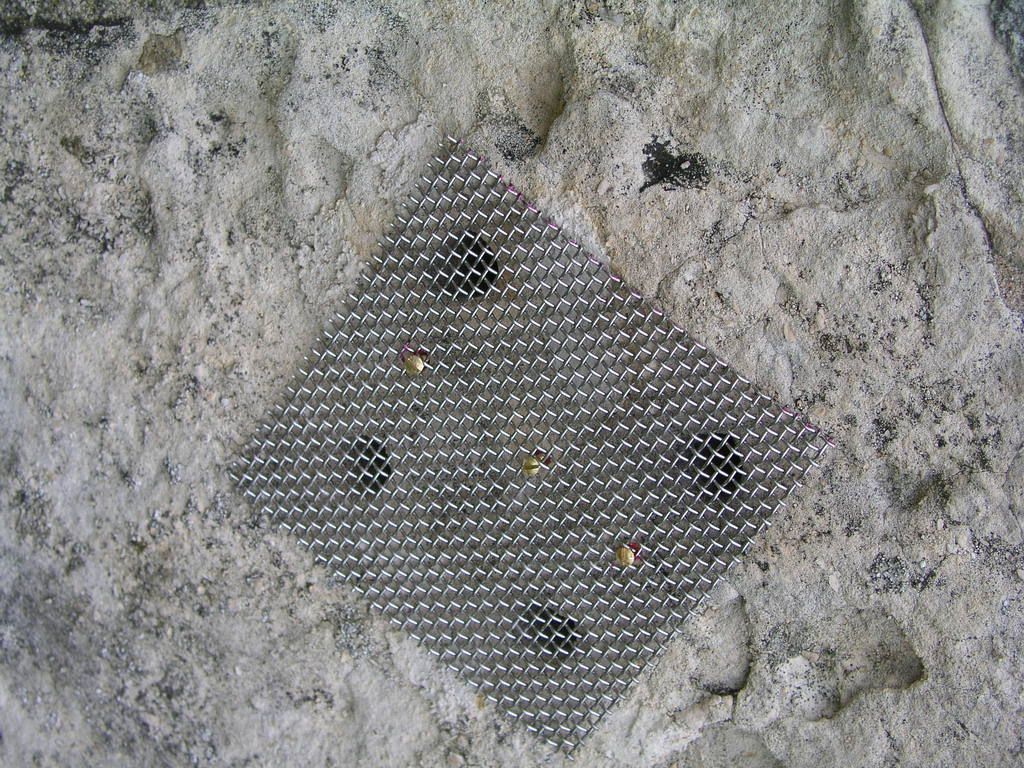88v8
Member
- Messages
- 3,129
- Location
- Glorious Gloucs
The top two courses of this Georgian* chimney stack
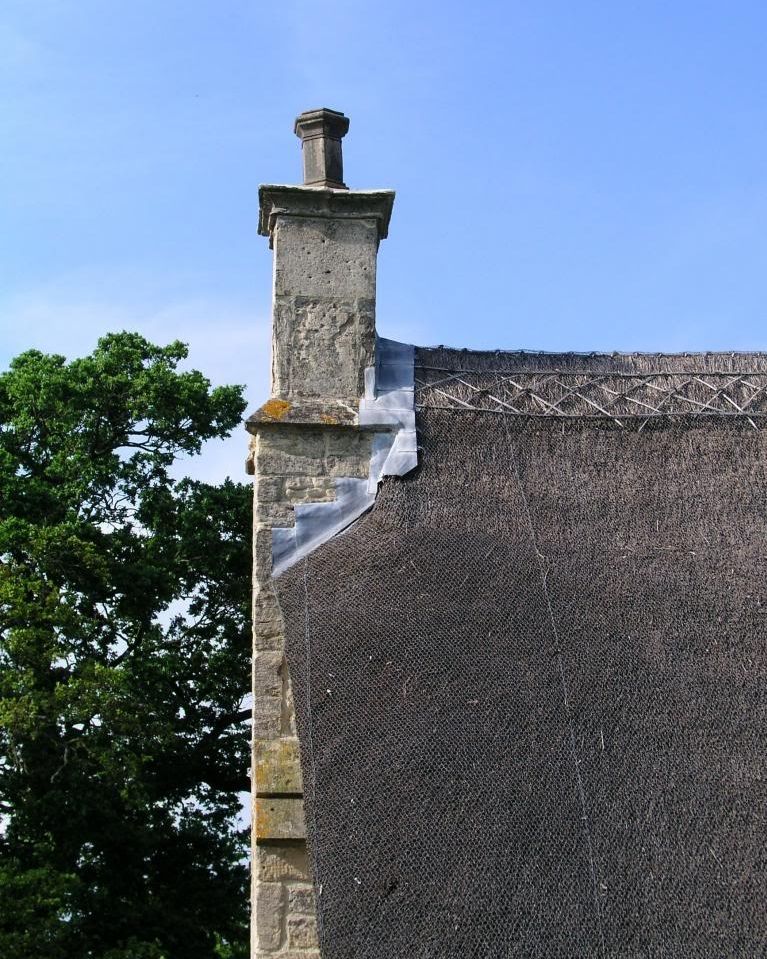
are made of four ashlar Cotswold stone slabs, each approx. 18"h x 15"w and 3" thick. This is a typical Cotswold construction.
On top is an elaborately moulded two-piece stone cap, approx 8x10" section
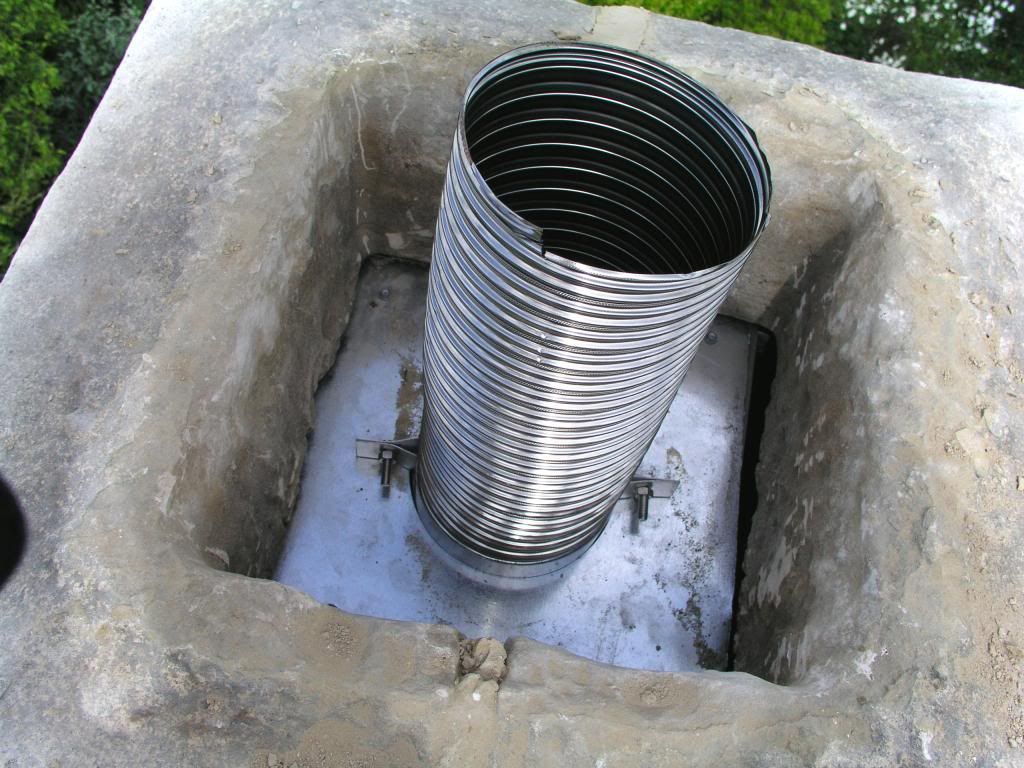
Here you see the joints at 12 & 6 o'clock.
Currently there is a scaffolding, in progress here, up against the stack which I had put there to replace the Victorian pot with something taller.

Here you see on the left the projected 42" replacement, with the twin of the present 24" incumbent on the right.
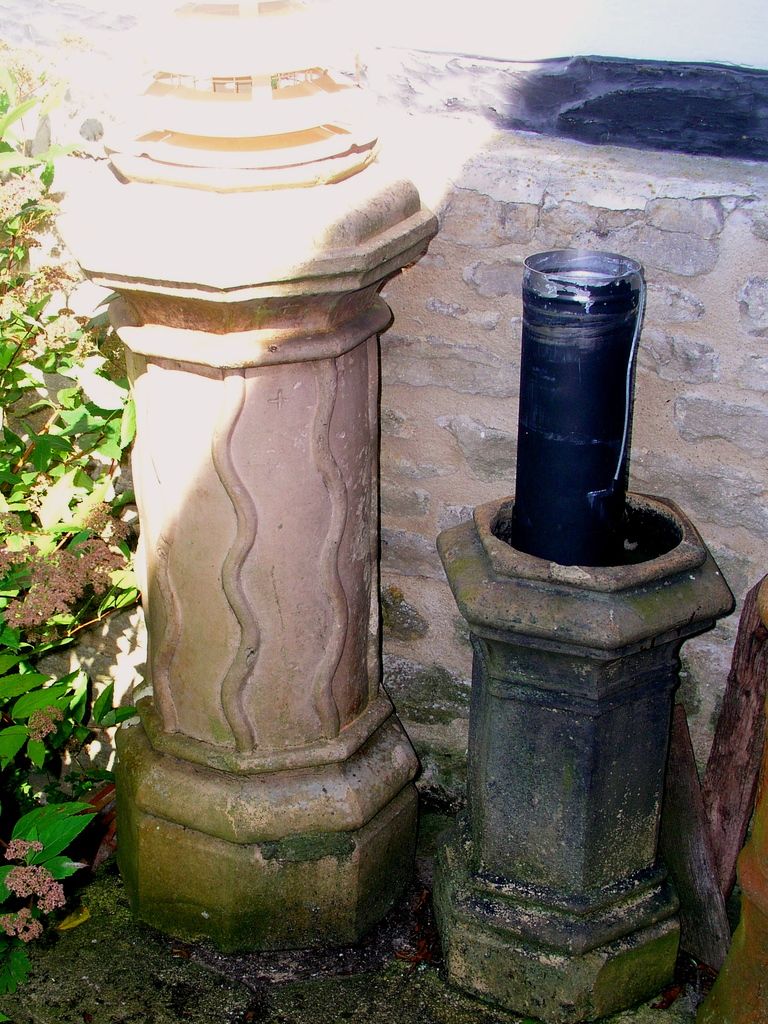
Annoyingly, this idea has rather foundered, as the footprint of the 'new' pot is an inch too wide for the capstones and it would be difficult and possibly damaging to carve the necessary niches in-situ, so I will probably end up just putting up the twin of the previous pot, but set a little higher in the stack.

Which is not worth the £1,000 spent on the scaffold, but heyho.
From the scaffold, I can see that one of the stone slabs looks rather decayed on the outside and I am toying with the idea of replacing it.
It appears that the four slabs are just butted up against each other, a straight vertical joint. I had the idea that I could insert a stone saw, cut through the mortar and simply lean the decayed slab out. The weight would be manageable - an online calculator has 68lb (or 897 tablespooons !) and it seems a shame to waste the opportunity while the scaffold is there.
But... it occurs to me that there are likely to be iron dowels in the joints. I can't believe the slabs are simply butted, relying on the weight of the capstones to hold the whole caboodle together.
There is no sign of the cracking I normally associate with old dowels, but if there are dowels there, on the one hand this makes the whole structure much stronger, on the other hand I'm sunk as regards replacing the slab as the capstones would have to come off, which ain't going to happen.
Any experience?
Dowels?
Ivor
* I suspect the whole stack was a Georgian era transplant from another, older and grander, estate building as it is quite out of keeping with what would then have been an umble workers' cottage.

are made of four ashlar Cotswold stone slabs, each approx. 18"h x 15"w and 3" thick. This is a typical Cotswold construction.
On top is an elaborately moulded two-piece stone cap, approx 8x10" section

Here you see the joints at 12 & 6 o'clock.
Currently there is a scaffolding, in progress here, up against the stack which I had put there to replace the Victorian pot with something taller.

Here you see on the left the projected 42" replacement, with the twin of the present 24" incumbent on the right.

Annoyingly, this idea has rather foundered, as the footprint of the 'new' pot is an inch too wide for the capstones and it would be difficult and possibly damaging to carve the necessary niches in-situ, so I will probably end up just putting up the twin of the previous pot, but set a little higher in the stack.

Which is not worth the £1,000 spent on the scaffold, but heyho.
From the scaffold, I can see that one of the stone slabs looks rather decayed on the outside and I am toying with the idea of replacing it.
It appears that the four slabs are just butted up against each other, a straight vertical joint. I had the idea that I could insert a stone saw, cut through the mortar and simply lean the decayed slab out. The weight would be manageable - an online calculator has 68lb (or 897 tablespooons !) and it seems a shame to waste the opportunity while the scaffold is there.
But... it occurs to me that there are likely to be iron dowels in the joints. I can't believe the slabs are simply butted, relying on the weight of the capstones to hold the whole caboodle together.
There is no sign of the cracking I normally associate with old dowels, but if there are dowels there, on the one hand this makes the whole structure much stronger, on the other hand I'm sunk as regards replacing the slab as the capstones would have to come off, which ain't going to happen.
Any experience?
Dowels?
Ivor
* I suspect the whole stack was a Georgian era transplant from another, older and grander, estate building as it is quite out of keeping with what would then have been an umble workers' cottage.

